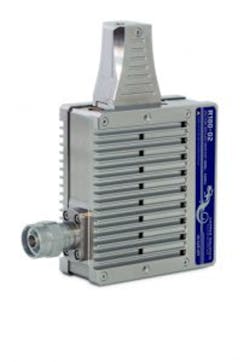Frost & Sullivan cites Copper Mountain Technologies for USB VNAs
Santa Clara, CA. Based on recent analysis of the universal serial bus (USB) vector network analyzer (VNA) industry, Frost & Sullivan has recognizes Copper Mountain Technologies (CMT) with a 2017 Global Frost & Sullivan Award for Product Leadership. The imminent move of many Internet of Things (IoT) technologies from research to commercialization is expected to drive the demand for lower cost instrumentation over the next five to ten years. CMT reports it is well positioned to make the most of this opportunity with a strong and established USB VNA offering that is coupled with customer support spanning service, software development, and customization.
“CMT distinguishes itself from the competition by offering quality measurement VNAs that provide reliable results, yet are small, can be simply integrated into systems, and are more affordable than traditional analyzers,” said Frost & Sullivan industry director Jessy Cavazos. “In addition, CMT places due emphasis on providing outstanding support to tier II and tier III customers that do not have the need or the means to afford high-end VNA solutions from incumbents.”
The company has set up a dedicated team of engineers to respond to customer questions. Its software production team writes test and production automation software for running customers’ entire test process, test results sorting and storage, work-order generation, work order status recording, labeling, and part number assignments.
CMT said it has also increased its focus on customization in the past year. Because it does not have a computer inside the VNA box, it is not limited by a computer or screen size, dials, and buttons. CMT can easily move modules and PC boards, thereby changing the form factor, type, and location of connectors to meet specific customer requirements.
CMT has expanded its product portfolio of USB VNAs to include various models of different performance, size, and price points. Its portfolio of VNAs includes
- 1-port VNAs, also known as reflectometers or cable and antenna analyzers, with four models that range in frequency from 1 MHz to 18 GHz
- Compact Series instruments, which scores high in form factor while still providing sufficient performance for many customers, with six models ranging in frequency from 9 kHz to 8.5 GHz;
- Planar, a full-size VNA product line that includes four models ranging in frequency from 100 kHz to 8 GHz;
- Cobalt product lines—the company’s flagship lines—which include 12 models ranging in frequency from 100 kHz to 20 GHz; and
- CobaltFX, which is a millimeter-wave solution up to 110 GHz.
The company has a dedicated metrology group that focuses on temperature stability and measurement accuracy during the design phase of the instruments. CMT’s current customer base primarily consists of companies involved in research activities. However, users are increasingly employing USB VNAs in the production and deployment space as IoT products move from the research and development to the manufacturing phase, the company said.
“The higher adoption of USB VNA is also driven by the rising costs of tests and customer awareness of the ways in which USB instrumentation can help them be more cost-efficient,” noted Cavazos. “CMT has optimally tapped this demand by partnering with companies in allied industries. This strategy has not only enhanced its value proposition to customers, but also set it up for future growth in the USB VNA industry.”
Frost & Sullivan Best Practices awards recognize companies in a variety of regional and global markets for demonstrating outstanding achievement and superior performance in areas such as leadership, technological innovation, customer service, and strategic product development. Industry analysts compare market participants and measure performance through in-depth interviews, analysis, and extensive secondary research to identify best practices in the industry.
Read Frost & Sullivan’s report on CMT here.
Read an interview with Alex Goloschokin, CMT’s founder and chief revenue officer, and Rick Nelson, EE-Evaluation Engineering executive editor, here.

